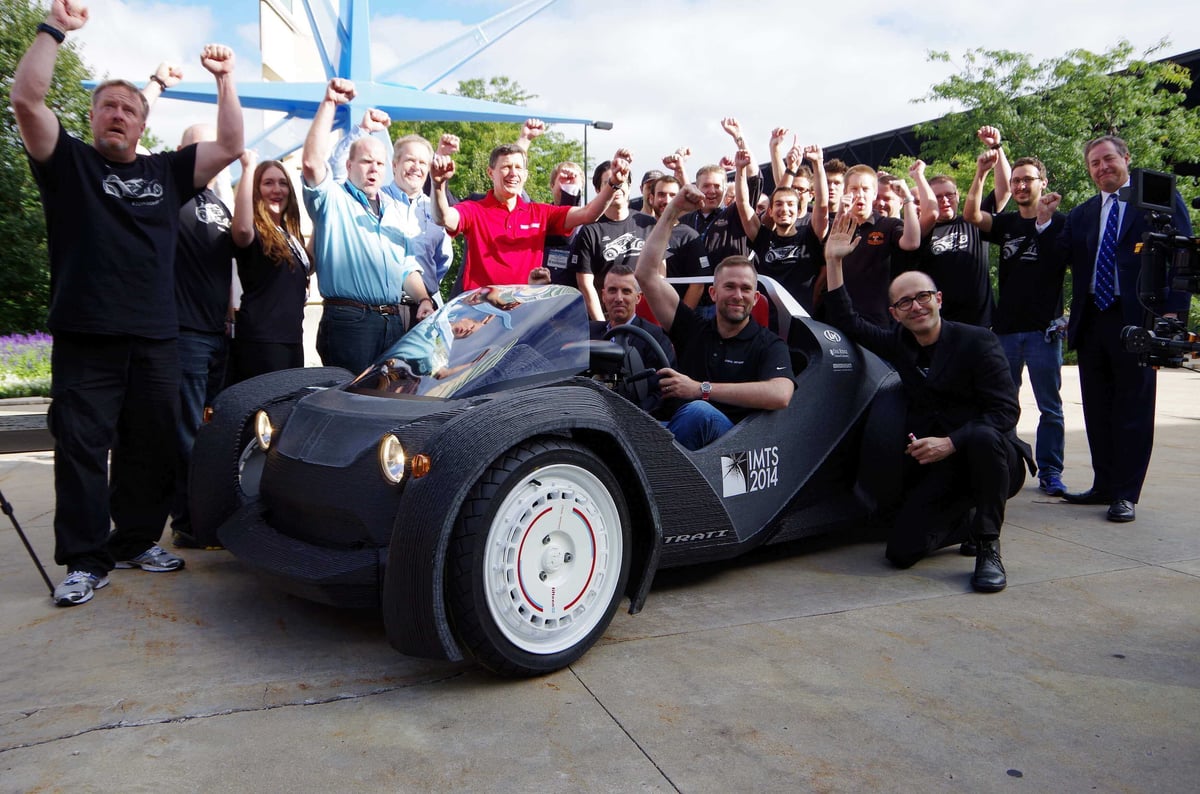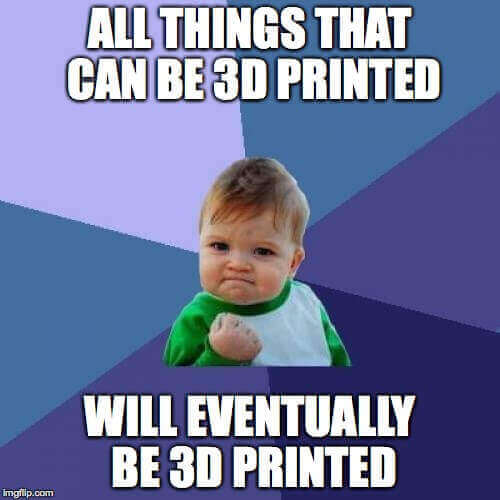Nils Hitze is one of the leading 3D printing evangelists in Germany. He’s a member of the 3D Printing Association Advisory Board and founder of 3dDinge.de in Germany. In this guest post, he re-interprets Atwood’s Law for 3D printing.
You know how these things are. I was joking with some friends about a 3D printed fishing rod one day. Then I came up with the idea that there ought to be a law in 3D printing that corresponds to to Atwood’s law in JavaScript:
“Any application that can be written in JavaScript, will eventually be written in JavaScript.”
And wouldn’t you know it, a 3D printed fishing rod has since become become a reality. So, before anyone else claims credit, I will call my theory “Nils’ law”:
“All things that can be 3D printed, will eventually be 3D printed.”
Not convinced? Challenge accepted. Here are five examples to support my theory:
Exhibit A: 3D Printed Houses
It was only a matter of time before architects turned to 3D printing buildings. Why? Because a large proportion are already using 3d printing for their models.
Whether this technology can improve upon classic building skills remains to be seen. But there is definite growth in pre-fabricated elements, for example walls that are 3d printed in factories (with the cheapest available technology) and then assembled on-site.
Incidentally, contour crafting is already a part of my life since the BarCamp Munich 2010, where I did a session on 3D printing for the first time.
In Dubai, there are plans for the first ever completely 3D printed office building.
Exhibit B: 3D Printed Cars

Scientists at OakRidge National Lab have built an e-Shelby Cobra with 3D printed parts – an amazing and completely working model.
Also, the crowdsourcing collective Local Motors came up with the Strati, probably the world’s first 3D printed car. Local Motors have just presented a completely new model.
Exhibit C: 3D Printed Instruments
We showed you the HR Giger inspirated guitar a while ago.
While doing research for this article I’ve stumbled across a recorder made with a 3D printer (& PVC Pipe). Also, there’s a nice list of 3D printed instruments.
Exhibit D: 3D Printed Clothes

3D printed clothes range from the well known Bikini N12…

… via printed shoes …

to a complete dress for Dita von Teese.
And last but not least …
Exhibit E: 3D Printed Organs
Not necessarily a job for a desktop 3D-Printer like the Ultimaker 2, but still thanks to Organovo, the 3D printed liver may become real in the nearer future.
In general, the Biotech sector is rapidly gaining speed, but it will be a while before we get a fully 3D-printed human, ‘Fifth Element’ style.
Conclusion

My law is valid. The five examples I’ve showed you are only the tip of the iceberg.
It’s not about replacing production through 3D printing by all means. That’s simply not economical.
If you need 10.000 identical parts, injection moulding still is the way to go. But look at it another way:
“I suppose it is tempting, if the only tool you have is a hammer, to treat everything as if it were a nail.”
In my opinion, it’s about finding out what you can do with 3D Printers, broadening the frontiers all the time, keeping your eyes open, and approaching problems with creativity.
And if, for example, a consequence of these bold new experiments is to develop an affordable prosthesis for anyone that needs it? Well, I guess that’s a fine thing.
This article appeared first (in german language) at 3dDinge.de.
License: The text of "Atwood’s Law: What it Means for 3D Printing" by All3DP is licensed under a Creative Commons Attribution 4.0 International License.
